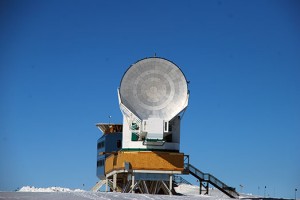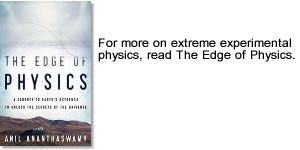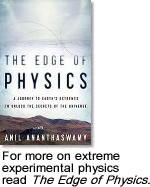Cosmic backlight shows up giant galaxy cluster

THE SOUTH POLE TELESCOPE has discovered the most massive cluster of galaxies yet seen at a distance of 7 billion light years.
The 10-meter SPT is an extremely sensitive radio telescope, designed to study the cosmic microwave background, the universe’s first light that was emitted when the cosmos was about 370,000 years old.
As the CMB travels towards us, it encounters mostly empty space. But occasionally, it’ll have to pass through a galaxy cluster, and this has the effect of reducing the temperautre of the CMB photons. It’s called the Sunayev-Zeldovich effect, after the scientists who predicted it in the 1970s.
It’s these cool spots in the CMB that the SPT is trying to find-and it did find one that led to the discovery of the massive cluster, which has a mass of 800 trillion suns.
What is amazing is that the cosmic microwave background, which is itself an extremely faint radiation, is now being used a cosmic back-light, shining at us from the early universe, before any large-scale structures had formed. Galaxy clusters show up as shadows-in a manner of speaking-against this back-light, helping us see the universe’s earliest giant structures which would be too faint for optical telescopes.
The above picture was taken when the SPT was still under construction (it doesn’t have the ground shield that will protect it from radiation reflected off the snow and ice). During my visit to the South Pole, I thought this telescope was one of the most beautiful I had seen through all my trips to write The Edge of Physics.
See here for press release from the Harvard Smithsonian Center for Astrophysics.



0 comments
Kick things off by filling out the form below.
You must log in to post a comment.